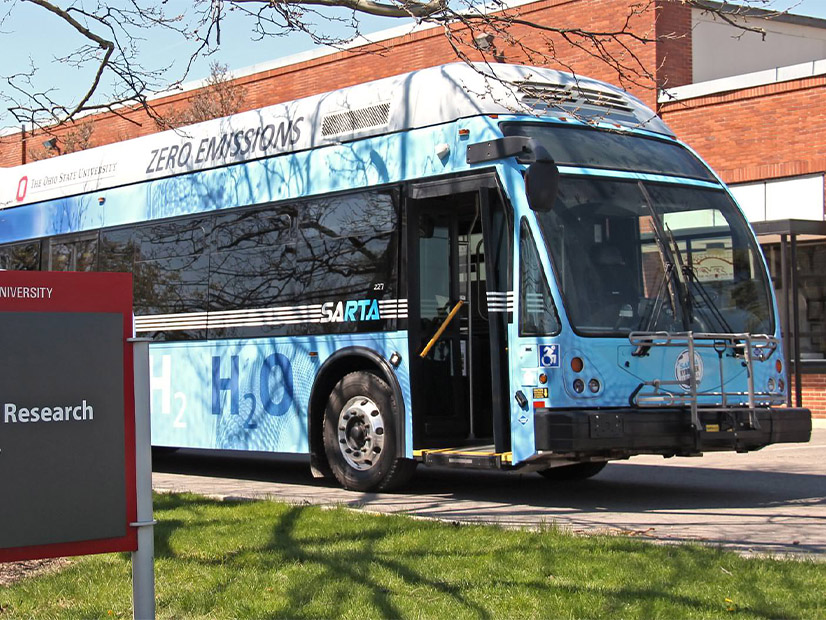
Midwest industries with operations in Ohio and Pennsylvania filed detailed responses to the U.S. Department of Energy’s initial request for information (RFI) on what it will take to develop a multistate hydrogen hub replacing natural gas with hydrogen in refining, power generation, steel and cement making, and fertilizer production.
DOE has been authorized to spend $8 billion to foster the development of regional hydrogen hubs, including one or two hubs that convert natural gas to hydrogen for regional use, and sequester the resulting carbon dioxide underground if it is not needed for other industrial processes. The resulting “blue hydrogen” can be mass produced with established technologies at a fraction of the cost of hydrogen produced with electrolysis.
Ohio, Pennsylvania and West Virginia sit above the Marcellus and Utica shale gas formations that have produced massive quantities of natural gas at prices well below the national average for the last decade. The development of a tristate hydrogen hub in the region would provide a new use — with a resulting boom — in shale gas development.
The Ohio Clean Hydrogen Hub, with more than 50 members, and the Midwest Hydrogen Center of Excellence at Cleveland State University noted that Ohio’s industries are within 600 miles of 60% of the nation’s population and are well connected “via energy delivery highways” both with the Upper Midwest and the East Coast.
The group also noted that industries in the state have a use for carbon dioxide and that CO2 not needed could be injected deep underground because Ohio’s geology is well suited for injection wells.
“The [eventual DOE] RFP should give preference for at least one blue hydrogen-focused hub,” the Ohio group wrote. “The Appalachian region offers not only significant access to natural gas but also additional feed stocks from coal, waste coal, biomass co-firing and nuclear. Ohio also has ideal geology for carbon dioxide injection.
“Ohio’s well established markets for the use of carbon dioxide with urea and cement manufacturing put the state in a unique position to utilize every aspect of existing industries to further bolster hydrogen generation.”
Kirt Conrad, CEO of the Stark Area Regional Transit Authority and an organizer of the Ohio Clean Hydrogen Hub Alliance, said that despite separate filings to DOE, the Alliance is committed to working with Pennsylvania and West Virginia and other nearby states to develop a hydrogen hub.
Adding that creating the hub will also need assistance from the states — for example, for authorization to build hydrogen pipelines and sequestration of carbon dioxide — Conrad said the effort essentially has to be industry-driven.
“The state needs to support us at some level. But ultimately, if you really look at the RFI, it’s people putting together projects in a plan to, basically, create a hydrogen ecosystem. So really is going to be the private sector, the users and consumers of hydrogen that are going to be the centerpiece of this,” he said.
Although Ohio and Pennsylvania groups last month separately announced the creation of industry groups to compete for the DOE hydrogen grant, both have worked together in the weeks since. (See Penn., Ohio and W.Va Considering Regional Hydrogen Hub.)
Despite that, the Ohio alliance and the Pittsburgh-based Northern Appalachian Industrial Alliance, whose members include heavy industry in both states, each submitted a separate filing in answer to the RFI.
Michael Docherty, executive director of Pittsburgh-based IN-2-Market, said he was not authorized to release the 17-page document the Pennsylvania alliance submitted because not all of its members had agreed to releasing it. But he stressed that the alliance is strongly committed to working with other groups in the effort to qualify for and win a DOE grant.
“We are absolutely — and have been from the beginning — committed to a tristate and regional approach,” he told NetZero Insider. “We believe that that’s the only way that this is going to be successful. And so we’re taking on the difficult task of working across state boundaries and across all these different regional stakeholder groups to try to find common ground.
“That includes engaging with all the key stakeholders, including legislators, labor, industry, universities [and] economic development. We are just in the early stages of those efforts, but we’re just trying to be a convener and a catalyst for promoting the opportunity and [to develop] a common vision. That’s probably the most succinct way I could put,” he said.
The West Virginia governor’s office did not respond to earlier calls for comment. But U.S. Sen. Joe Manchin (D-W.Va.) issued a released Tuesday announcing the state’s coalition had submitted a response to DOE.
In that release, Gov. Jim Justice (R) wrote: “West Virginia is the place where this all-important hydrogen hub belongs. As one the world’s energy powerhouses for generations, West Virginia has long served as the home of all kinds of cutting-edge technological advances in energy production, thanks to our rich natural resources and our skilled and dedicated workforce.”
